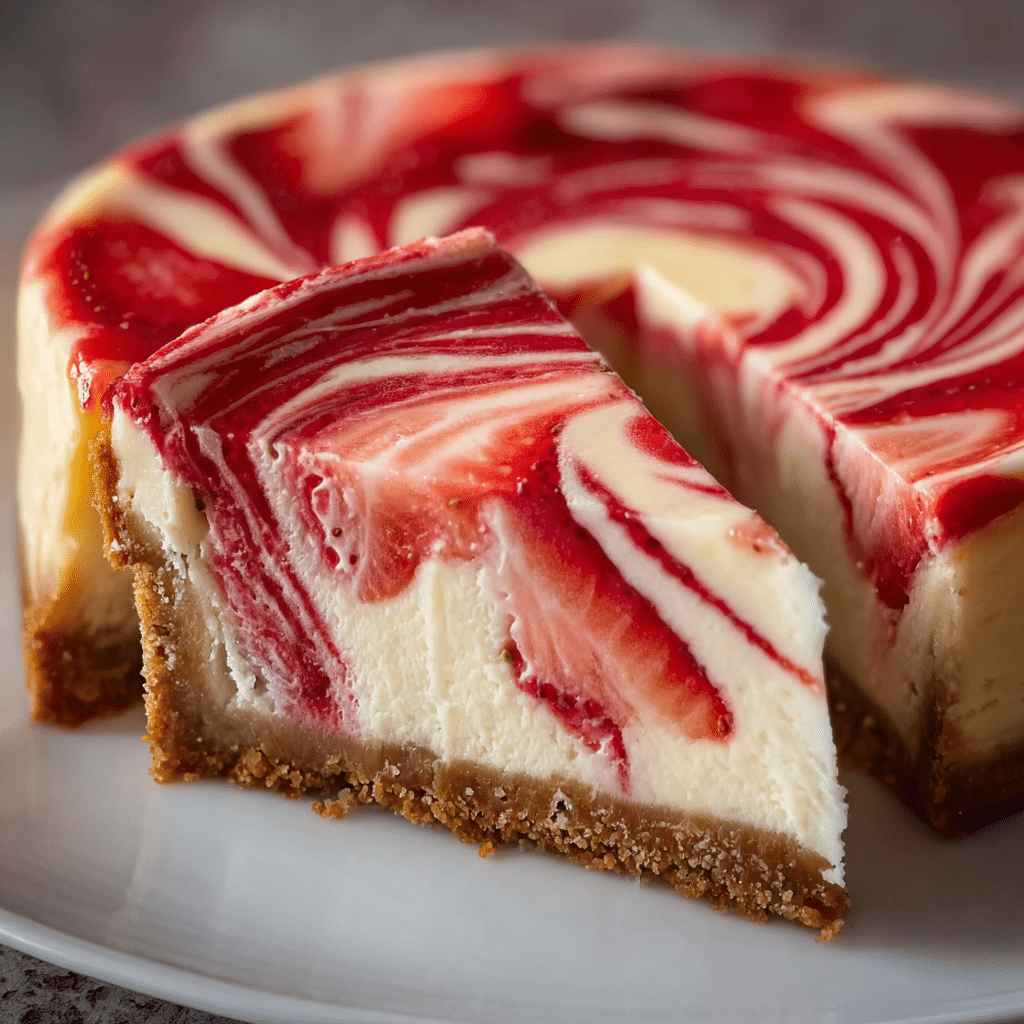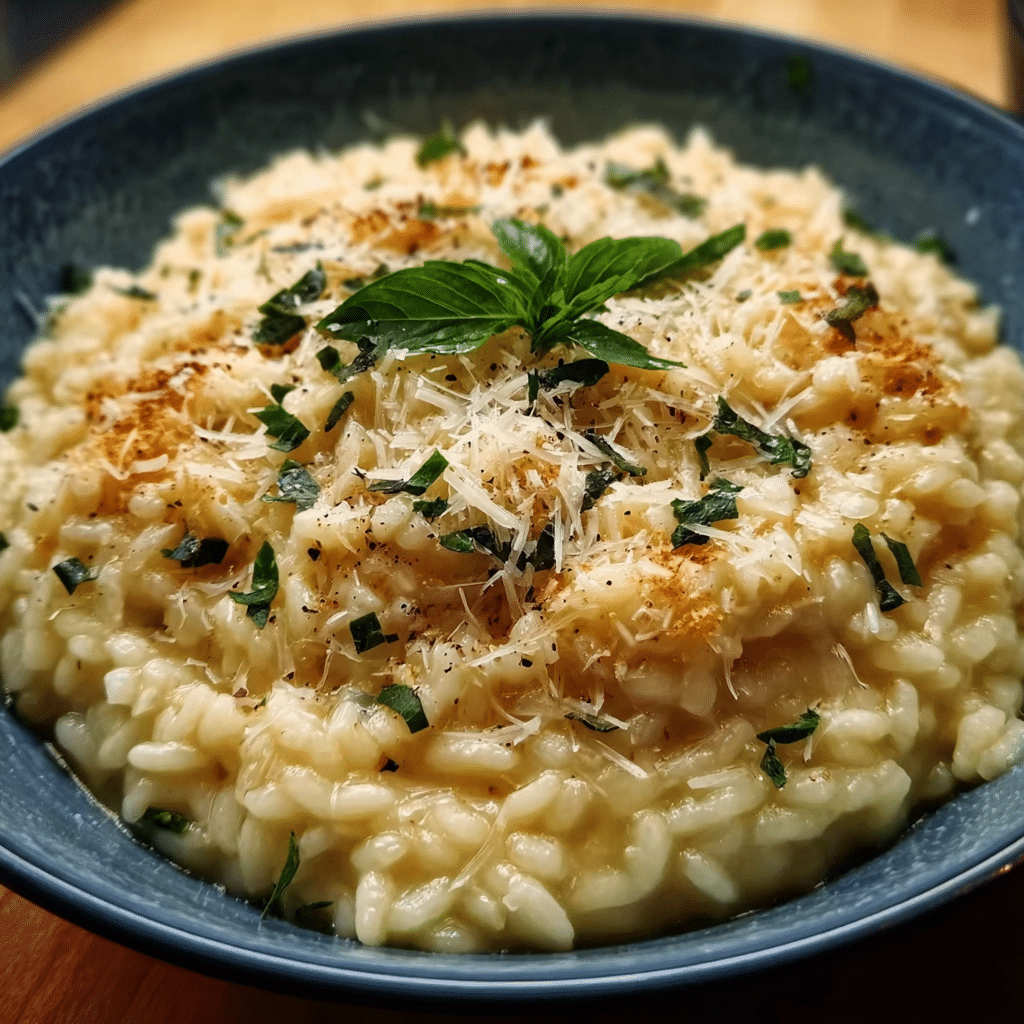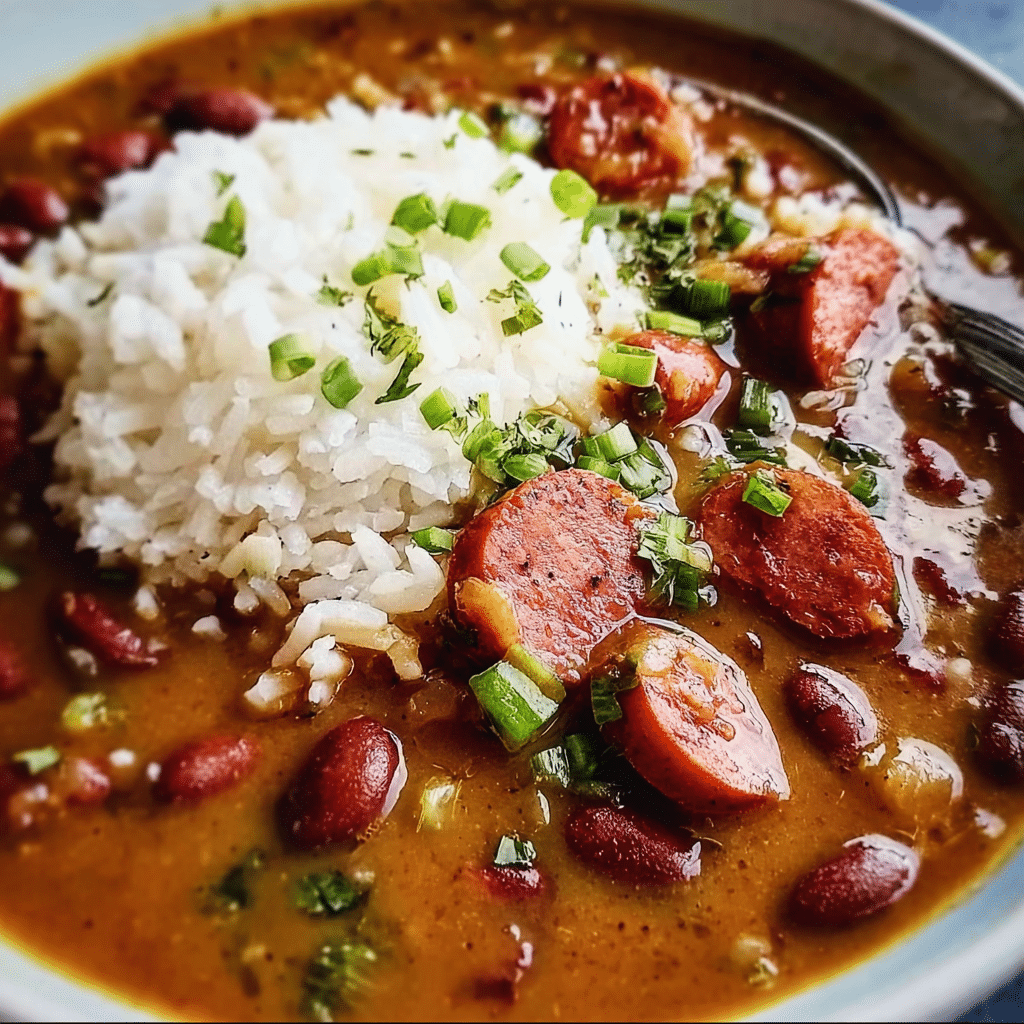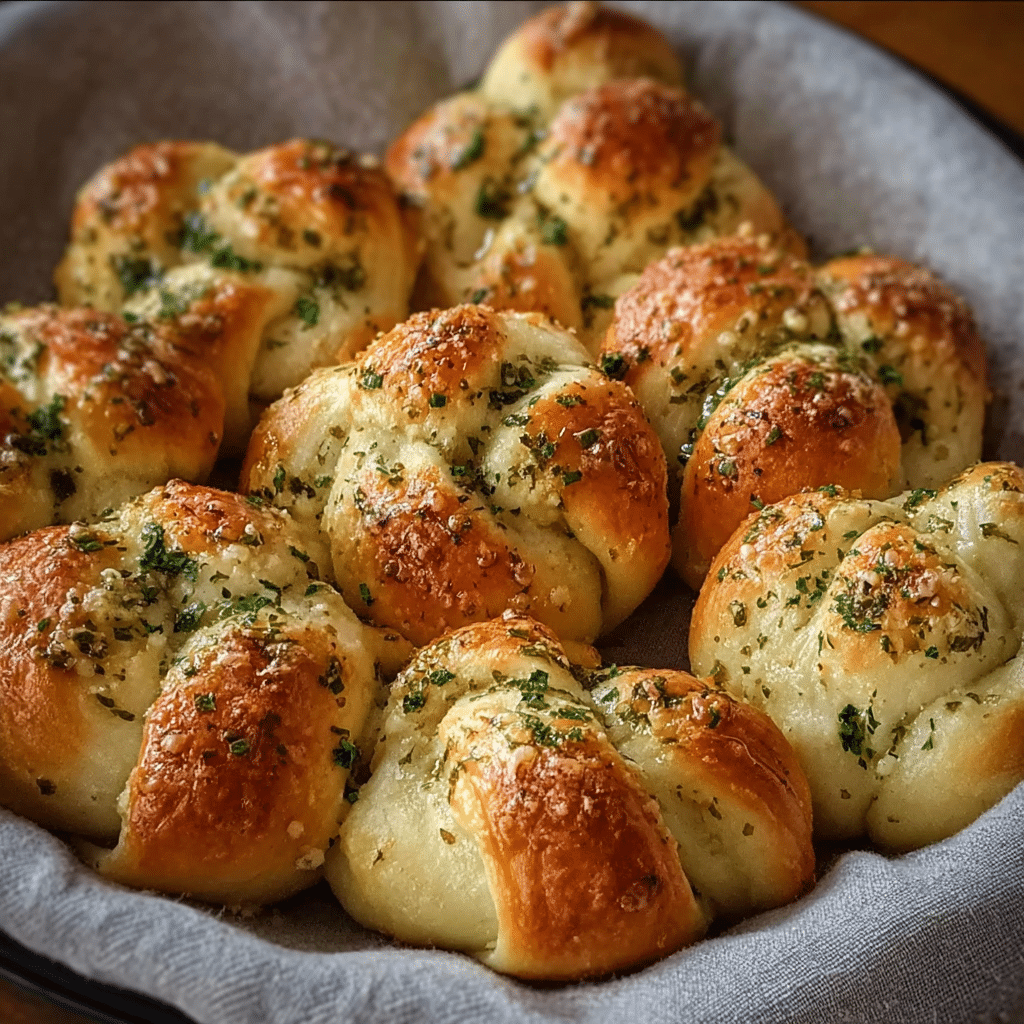Pumpkin baked oatmeal is not just a dish; it’s a warm embrace on a chilly autumn morning, a delightful way to kickstart your day with comfort and nutrition. I remember the first time I stumbled upon this recipe. It was one of those crisp October mornings when the leaves were painted with vibrant hues of orange and gold, and I was feeling particularly nostalgic. I had just returned from a pumpkin patch visit with my children, our arms laden with the plumpest, most imperfect pumpkins we could find. As we sat around the kitchen table, I thought, “What better way to celebrate this bounty than by baking something that embodies the very essence of fall?” And so my journey with pumpkin baked oatmeal began.

As I gathered the ingredients—old-fashioned oats, pure pumpkin puree, a warm blend of spices like cinnamon and nutmeg, and a splash of maple syrup—I felt a wave of excitement wash over me. The aroma that filled my kitchen was intoxicating, a sweet and earthy scent that spoke of comfort and home. When the dish finally came out of the oven, golden and bubbling, I couldn’t wait to dig in. One bite, and I was hooked. It was creamy, slightly sweet, and utterly satisfying, unlike any other oatmeal I had ever made. This dish quickly became a staple in our home, not just for breakfast but also for cozy dinners.
The Story Behind This Recipe
The history of pumpkin baked oatmeal is a charming tale that weaves together the culinary traditions of various cultures. Oatmeal itself has been a staple in countless households, especially in regions where oats are plentiful. The addition of pumpkin, however, is a testament to the bountiful harvests of fall and the creative ways people have learned to incorporate seasonal ingredients into their meals. The combination of oats and pumpkin is particularly popular in North America, where both ingredients are harvested during the autumn months.
In many ways, pumpkin baked oatmeal serves as a bridge between cultures. It encompasses the heartiness of classic American breakfasts while drawing inspiration from various global cuisines that celebrate grains and squash. The beauty of this dish lies in its versatility; you can find variations in different regions, from spiced versions in New England to more adventurous takes in other parts of the country.
Why You’ll Love This Dish
What makes pumpkin baked oatmeal special is not just its rich flavor but also its practicality for busy families. In our hectic lives, finding time to prepare nutritious meals can feel like an uphill battle. This recipe stands out because it can be prepared in advance, baked in a single dish, and enjoyed for several days. You can serve it warm, at room temperature, or even cold, making it an incredibly flexible option for breakfast, snack time, or a light dinner.
Moreover, this dish is a celebration of the season. As the days grow shorter and the air turns crisp, pumpkin baked oatmeal brings a sense of warmth and nostalgia that many of us cherish. It’s perfect for cozy family breakfasts or for when friends drop by unexpectedly. The act of baking together can become a cherished family tradition, fostering connections and creating memories.
But beyond its practicality and seasonal relevance, there’s an emotional connection to pumpkin baked oatmeal. It symbolizes comfort, warmth, and togetherness, reminiscent of family gatherings and holiday celebrations. Each bite tells a story; it whispers of laughter shared over breakfast tables and the simple joy of nourishing our loved ones. This dish isn’t just food; it’s an experience, a way to bring people together, especially during the fall when we all crave that comforting touch.
As you delve deeper into the world of pumpkin baked oatmeal, you’ll discover the endless possibilities it offers. You’ll learn how to customize the recipe to suit your taste or dietary needs, explore its history, and appreciate its significance in various cultures. Whether you’re a seasoned baker or a novice in the kitchen, this guide promises to equip you with everything you need to create your own delicious version of pumpkin baked oatmeal, making it a cherished part of your family’s culinary repertoire.
The Rich History and Cultural Significance of pumpkin baked oatmeal
The rich history and cultural significance of pumpkin baked oatmeal is a fascinating narrative that reflects the evolution of a beloved dish over time. To understand this dish fully, we must explore its origins, the regional variations that exist, the traditional occasions for serving it, and its nutritional benefits. Pumpkin baked oatmeal is not just a meal; it is a representation of how cultures adapt and innovate with the ingredients at their disposal.
Origins and History
Oatmeal has been a dietary staple for centuries, particularly in Europe and North America, where oats are easy to grow and harvest. The practice of baking oatmeal, however, is a more recent development, gaining popularity in the 20th century as home cooking began to evolve. The introduction of pumpkin into the oatmeal mixture is believed to have originated in New England, a region known for its bountiful squash harvests in the fall.
As early settlers from Europe adapted their cooking techniques to the ingredients available in their new homeland, recipes began to emerge that incorporated local produce. Pumpkin, a native squash to the Americas, became a key ingredient in many fall recipes. The combination of oats and pumpkin in a baked format likely evolved as families sought hearty and nutritious meals that could feed multiple mouths during the long, cold winters.
Cultural Significance
Across cultures, pumpkin baked oatmeal is often associated with family gatherings, harvest festivals, and Thanksgiving celebrations. In many households, it has become a traditional dish served in the autumn months, celebrating the harvest and the importance of family. The sweet and spicy flavors evoke a sense of home and comfort, making it an ideal dish to share with loved ones.
In recent years, pumpkin baked oatmeal has gained popularity beyond its traditional roots, becoming a favorite at brunch spots and cafes across the United States. Chefs and home cooks alike have embraced this dish, adding their own twists, like incorporating nuts, dried fruits, or even chocolate chips, to create unique variations that cater to different palates.
Nutritional Benefits
One of the most appealing aspects of pumpkin baked oatmeal is its nutritional profile. Oats are a fantastic source of whole grains, providing essential fiber that aids in digestion and promotes heart health. They are also rich in vitamins and minerals, including iron and magnesium. Pumpkin, on the other hand, is a nutrient powerhouse, packed with vitamins A and C, potassium, and antioxidants. This combination creates a dish that is not only delicious but also beneficial for your health.
Furthermore, pumpkin baked oatmeal is versatile and can be easily modified to suit various dietary needs. Whether you want to make it gluten-free by using certified gluten-free oats or vegan by substituting the eggs and milk with plant-based alternatives, this dish can adapt to fit a wide range of lifestyles. It’s a meal that can be enjoyed by everyone, from children to adults, making it an excellent option for family dinners or gatherings.
In conclusion, the rich history and cultural significance of pumpkin baked oatmeal is a testament to its enduring appeal. It reflects the creativity of home cooks throughout the years and the importance of seasonal ingredients in our culinary traditions. As we explore this delightful dish further, we not only honor its past but also celebrate its presence in our kitchens today, bringing warmth and joy to our tables.
Essential Ingredients for Perfect pumpkin baked oatmeal
When it comes to crafting the perfect pumpkin baked oatmeal, the choice of ingredients plays a pivotal role in achieving that cozy, comforting flavor that warms the soul. This dish, often associated with the crispness of autumn, is not only delicious but also packed with nutrition, making it a favorite among health-conscious eaters. In this section, we will explore the essential ingredients you need to create a scrumptious pumpkin baked oatmeal.
Essential Ingredients
- Old-fashioned rolled oats: 2 cups
- Pumpkin puree: 1 cup (canned or fresh)
- Milk: 1 cup (dairy or non-dairy alternatives)
- Eggs: 2 large
- Maple syrup or brown sugar: 1/4 cup
- Baking powder: 2 teaspoons
- Spices: 1 teaspoon cinnamon, 1/2 teaspoon nutmeg, and a pinch of salt
- Vanilla extract: 1 teaspoon
- Optional add-ins: 1/2 cup chopped nuts or dried fruits (e.g., walnuts, cranberries)
Each of these ingredients plays a critical role in the overall taste and texture of your pumpkin baked oatmeal. For instance, the old-fashioned rolled oats provide a chewy texture that is essential for the heartiness of this dish. They absorb the moisture from the pumpkin puree and milk, resulting in a satisfying consistency. If you were to use quick oats instead, the dish might turn out too mushy, losing that delightful chew.
Pumpkin puree is the star of the show, bringing a rich, earthy flavor and a beautiful orange hue to the final product. It’s not just about taste, though; pumpkin is loaded with vitamins A and C, making this dish a wholesome breakfast option. When selecting pumpkin puree, opt for 100% pure pumpkin without added sugars or spices. While canned pumpkin is convenient, using fresh pumpkin can elevate your dish even more if you have the time to roast and puree it yourself.
The choice of milk is also significant. Whether you prefer whole milk, almond milk, or oat milk, ensure it complements the other flavors. Dairy milk adds creaminess, while non-dairy alternatives can impart unique flavors. Just be cautious with flavored varieties, as they might alter the intended taste of your pumpkin baked oatmeal.
Eggs are crucial for binding the ingredients together, providing structure and moisture. For those who are vegan or have an egg allergy, you can substitute each egg with 1/4 cup of unsweetened applesauce or a flax egg (1 tablespoon ground flaxseed combined with 2.5 tablespoons water, allowed to sit until gelatinous).
Now, let’s talk about sweetness. Maple syrup or brown sugar adds that comforting sweetness, enhancing the natural sugars present in the pumpkin. If you’re looking to lower the sugar content, consider using mashed bananas, which not only sweeten the dish but also contribute to its moistness.
Print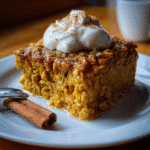
Pumpkin Baked Oatmeal
Ingredients
- olive oil or avocado oil , for greasing
- 2 cups rolled oats, use certified gluten free if needed
- 2 teaspoons pumpkin spice
- 1 teaspoon baking powder
- ¼ teaspoon salt
- 1 cup pumpkin puree, not pumpkin pie filling.
- 1 ¼ cup milk of choice, this works great with almond milk if dairy-free needed
- 2 large eggs, can sub flax eggs to make egg-free
- 2 teaspoons vanilla
- ⅓ cup maple syrup or honey
- chocolate chips, nuts, raisins or topping of choice., optional
Instructions
- Preheat the oven to 375℉ degrees. Grease an 8×8 baking dish with oil.
-
In a medium bowl, combine oats, pumpkin pie spice, baking powder, and salt. Mix to combine.
-
Add pumpkin puree, milk, eggs, vanilla, and maple syrup/honey to bowl. Stir to combine.
-
Spread into the prepared baking dish. Bake for 30-35 minutes. Oatmeal is done baking when it is puffed up on the edges, set in the middle and top is golden.
-
Let cool for 5 minutes before slicing. It will be soft at first but will firm up as it cools. Enjoy warm topped with yogurt, a splash of milk, a drizzle of honey or maple syrup, fruit, whipped cream or simply on its own. Let cool completely and store in an air-tight container fridge for up to 4 days.
Shopping Tips
When you’re out shopping for ingredients for your pumpkin baked oatmeal, consider opting for organic products where possible. Organic oats and pumpkin can offer a fresher taste and are free from harmful pesticides. However, if your budget doesn’t allow for organic, conventional options are still nutritious and tasty.
For the spices, buying whole spices and grinding them at home can make a noticeable difference in flavor. Freshly ground cinnamon and nutmeg give a warmth to the oatmeal that pre-ground spices simply cannot match. If you’re unsure about freshness, check the expiration date on the spice jars and choose those that are within a year of their packaging date.
Don’t forget to check the seasonal availability of pumpkins, especially if you aim to use fresh pumpkin. Typically, pumpkins are in season from September through November, making it the perfect time to pick them up at local farmers’ markets. If you’re using canned pumpkin, it’s available year-round, but be sure to stock up during the fall when prices drop.
Substitutions and Alternatives
Dietary restrictions should not prevent you from enjoying pumpkin baked oatmeal. There are several substitutions available. For gluten-free options, make sure to choose certified gluten-free oats. You can also replace dairy milk with almond, soy, or coconut milk to cater to lactose intolerance or vegan diets.
If you’re looking to cut back on sugar, consider using a sugar alternative like stevia or monk fruit sweetener. These can be particularly beneficial for those managing diabetes. Additionally, adding applesauce can naturally sweeten your oatmeal while keeping it moist without the need for added sugars.
For those with nut allergies, simply omit the nuts or replace them with seeds like pumpkin or sunflower seeds for a similar crunch. Dried fruits like raisins or apricots can add sweetness and texture as well.
Lastly, as you prepare to store your ingredients, keep oats in a cool, dry place in an airtight container to extend their shelf life. Pumpkin puree can be kept in the fridge for up to a week once opened, or it can be frozen for later use. By understanding these ingredients and their roles, you’re well on your way to creating the perfect pumpkin baked oatmeal that will delight your taste buds and nourish your body.
Detailed Step-by-Step pumpkin baked oatmeal Cooking Instructions
Detailed Step-by-Step Pumpkin Baked Oatmeal Cooking Instructions
Preparing pumpkin baked oatmeal is not just about following a recipe; it’s an experience that fills your kitchen with the warm, inviting aromas of fall. This dish is perfect for a cozy weekend breakfast or even meal prep for busy weekdays. Below, I’ll guide you through each step in the process, ensuring you achieve a perfectly baked oatmeal that is both delicious and satisfying.
Preparation Steps
Before you dive into cooking, it’s essential to prepare your ingredients and tools so that the process goes smoothly.
- Preheat your oven: Start by preheating your oven to 350°F (175°C). This ensures that your pumpkin baked oatmeal cooks evenly from the moment it goes in.
- Gather your tools: You’ll need a large mixing bowl, a whisk, a measuring cup, a spatula, and a baking dish (9×9 inches works perfectly). Having everything at hand simplifies the process.
- Measure your ingredients: In a separate bowl, measure out your 2 cups of old-fashioned rolled oats, 1 cup of pumpkin puree, 1 cup of milk, and the rest of your ingredients. This mise en place technique will help you keep track of what you’ve added and what’s left.
- Prepare your baking dish: Lightly grease your baking dish with cooking spray or butter to prevent sticking.
Cooking Process
Now that you’re prepped and ready, let’s move on to the actual cooking process, where the magic happens.
- Combine wet ingredients: In your large mixing bowl, combine the pumpkin puree, milk, eggs, maple syrup (or brown sugar), and vanilla extract. Whisk these ingredients together until they are well blended. You want to achieve a smooth, homogenous mixture that looks rich and creamy.
- Mix dry ingredients: In a separate bowl, mix together your oats, baking powder, cinnamon, nutmeg, and salt. This step ensures that the baking powder is evenly distributed throughout the oats, helping your baked oatmeal rise perfectly.
- Combine wet and dry: Gradually add the dry oat mixture to the wet pumpkin mixture, folding it in gently with a spatula. Be careful not to overmix; you want to maintain a light texture.
- Add optional ingredients: If you’re using nuts or dried fruits, fold them in at this stage. They’ll add delightful texture and flavor to your oatmeal.
- Pour into baking dish: Transfer the mixture into your greased baking dish, spreading it evenly with your spatula.
- Bake: Place the baking dish in your preheated oven and bake for about 30 minutes. You’ll know it’s done when the edges start to pull away from the sides of the dish and the center is set. A toothpick inserted in the middle should come out clean.
Final Assembly
Once your pumpkin baked oatmeal is out of the oven, the final touches can elevate your dish even more.
- Cool before serving: Allow the baked oatmeal to cool for about 5-10 minutes. This cooling time helps it firm up a bit more, making for easier slicing.
- Slice and serve: Cut the oatmeal into squares or rectangles and serve warm. It pairs wonderfully with a drizzle of maple syrup or a dollop of yogurt, adding an extra layer of creaminess.
- Storage: If you have leftovers, store them in an airtight container in the fridge for up to a week. You can reheat individual portions in the microwave or enjoy them cold. This makes for a fantastic grab-and-go breakfast during busy mornings.
Common mistakes to avoid include underbaking, which can lead to a soggy texture, or overbaking, resulting in dryness. Keep an eye on your dish as it approaches the 30-minute mark, and use the visual cues mentioned earlier to guide you.
As you embark on this culinary adventure, remember that cooking is as much about intuition and personal flair as it is about following a recipe. Feel free to adjust spices, sweetness, or add your favorite mix-ins. The beauty of pumpkin baked oatmeal is its versatility, inviting you to make it your own while celebrating the flavors of fall. Enjoy each bite and the joy it brings to your kitchen!

Professional Tips and Techniques for pumpkin baked oatmeal
When it comes to making the perfect pumpkin baked oatmeal, there’s a delightful blend of art and science involved. Whether you’re a novice in the kitchen or a seasoned pro, mastering the nuances of this dish can elevate your breakfast game significantly. Let’s dive into some professional tips and techniques that will help you create a delicious and perfectly textured pumpkin baked oatmeal every time.
Professional Techniques
First off, let’s talk about the ingredients. The core of any successful pumpkin baked oatmeal recipe lies in the quality of the oats and pumpkin puree you use. Opt for old-fashioned rolled oats rather than quick oats; they provide a heartier texture and better chew. Additionally, for the pumpkin, using canned pumpkin puree is convenient, but roasting your own pumpkin can infuse a deeper flavor. Simply slice a small pumpkin, scoop out the seeds, and roast it until tender, then blend it into a smooth puree.
Next, don’t skimp on the spices. Cinnamon, nutmeg, and ginger are traditional, but feel free to experiment with other spices like cardamom or cloves to give your pumpkin baked oatmeal a unique twist. The key is to balance the spices so they enhance the pumpkin without overwhelming it. A pinch of salt is also crucial, as it helps to bring out the flavors.
When it comes to mixing, the order matters. Combine your dry ingredients first and stir them well to ensure that the baking powder or soda is evenly distributed. Then, in a separate bowl, mix the wet ingredients, including your pumpkin puree, eggs, milk, and any sweeteners you choose. Slowly incorporate the wet mixture into the dry ingredients, but be careful not to overmix. You want a cohesive batter without gluten development, which can make your baked oatmeal tough.
Troubleshooting Guide
Even with the best techniques, things don’t always go as planned. If your pumpkin baked oatmeal comes out too dry, it may be due to overbaking or not enough liquid in the mixture. Adding a bit more milk or water can help moisten it up. Conversely, if it’s too wet, consider reducing the liquid next time or increasing the baking time slightly.
Another common issue is uneven baking. This can happen if your oven isn’t properly calibrated. A good way to combat this is to rotate your dish halfway through baking. Also, make sure to use a baking dish that is the right size; an overcrowded dish can lead to uneven cooking.
Presentation Tips
Now, let’s not forget about how to present your pumpkin baked oatmeal. While it’s delicious straight from the oven, a little extra effort in presentation can make breakfast feel special. Consider serving it in individual ramekins for a charming touch. Top each serving with a dollop of yogurt or whipped cream and a sprinkle of nuts or seeds for added texture and nutrition.
You can also jazz it up with a drizzle of maple syrup or honey, and a sprinkle of cinnamon or nutmeg right before serving. Fresh fruits like sliced bananas or pomegranate seeds can add a pop of color and a burst of flavor. And don’t forget about beverage pairings! A warm cup of chai tea or a spiced latte complements the flavors beautifully, making your breakfast not just a meal but an experience.
For meal prep, consider making a double batch of your pumpkin baked oatmeal so you can enjoy it throughout the week. It stores well in the fridge for about five days and can be easily reheated. Just add a splash of milk to bring back the creamy texture before warming it in the microwave. You can also freeze individual portions for an even longer shelf life, making weekday breakfasts a breeze.
Scaling the recipe is another useful skill. If you’re cooking for a crowd, simply double the ingredients and use a larger baking dish. Just keep an eye on the baking time; it may require a few extra minutes in the oven.
Creative Variations and Adaptations of pumpkin baked oatmeal
One of the joys of cooking is experimenting and making a recipe your own. Pumpkin baked oatmeal is incredibly versatile, allowing for a host of creative variations and adaptations that cater to different tastes and dietary preferences. Let’s explore some exciting twists that you can incorporate into your next batch.
Seasonal Variations
While pumpkin is synonymous with fall, you can incorporate a variety of seasonal ingredients into your pumpkin baked oatmeal. In the winter, try adding dried fruits like cranberries or apricots for a chewy texture and a hint of tartness. In spring, swap the pumpkin for fresh fruits like strawberries or blueberries, and adjust the spices to highlight the freshness of the produce.
Summer brings the chance to experiment with herbs. Imagine infusing your baked oatmeal with fresh basil or mint, paired with peaches or nectarines for a refreshing twist. The key is to let the season guide your ingredient choices, ensuring that your dish is as fresh and vibrant as possible.
Dietary Adaptations
If you’re following a specific diet, don’t fret! The beauty of pumpkin baked oatmeal is its adaptability. For a vegan version, substitute eggs with flaxseed meal mixed with water or applesauce. Use plant-based milk, such as almond, oat, or coconut milk, and you’ve got a delicious vegan breakfast option.
For those on a keto diet, swap out traditional oats for a mix of ground nuts and seeds. Almond meal combined with chia seeds can create a similar texture while keeping the carb count low. You can also enhance the flavor by adding sugar-free sweeteners like erythritol or stevia, as well as spices that complement pumpkin without the need for added sugar.
Creative Twists
If you’re in the mood for something truly unique, think about international fusion variations. How about a chai-spiced pumpkin baked oatmeal? Simply replace the traditional spices with chai spices like cardamom, cinnamon, and black pepper. You can also incorporate flavors from the Middle East by adding tahini and dates for a rich, nutty flavor.
Another exciting twist is to incorporate savory elements into your baked oatmeal. Consider adding cooked sausage or bacon, which can create a delicious sweet-and-savory profile. Top it with a poached egg after baking for a protein-packed breakfast that will keep you satisfied for hours.
Don’t forget about using different cooking methods to change things up! If you don’t have an oven, you can make a stovetop version by cooking the oats slowly in a pot with your pumpkin puree and spices. Alternatively, a slow cooker can yield a creamy texture, perfect for those lazy mornings when you want to wake up to a warm, hearty breakfast waiting for you.
And if you have leftovers, get creative! Transform your pumpkin baked oatmeal into energy balls by mixing it with nut butter and forming small bites, or turn it into a smoothie bowl by blending it with yogurt and your favorite toppings.
In conclusion, the world of pumpkin baked oatmeal is vast and rich with possibilities. Don’t hesitate to experiment with flavors and techniques, and soon you’ll find your own signature twist on this beloved dish!
Storage, Reheating, and Meal Prep for pumpkin baked oatmeal
When it comes to pumpkin baked oatmeal, one of the most delightful aspects is its versatility—not just in flavor, but also in storage and meal prep. My journey with pumpkin baked oatmeal began on a crisp autumn morning, where the air was filled with the earthy scents of falling leaves and pumpkin spice. I decided to whip up a batch of this hearty dish, and what I discovered was a delightful recipe that not only satisfied my cravings but also provided practical solutions for busy mornings. Let’s dive into the detailed storage, reheating, and meal prep strategies that will help you enjoy this delicious treat any time of the year!

Short-term Storage
After baking a tray of pumpkin baked oatmeal, you might find yourself with more than you can eat in one sitting. Fortunately, this dish stores beautifully in the refrigerator! To keep your pumpkin baked oatmeal fresh, allow it to cool completely before transferring it to storage containers. I love using airtight glass containers, as they keep moisture in while preventing any absorption of odors from the fridge. Opt for one that’s just the right size for your leftovers—this will minimize air exposure and help maintain the dish’s texture.
For short-term storage, pumpkin baked oatmeal can be kept in the refrigerator for about 5 to 7 days. If you’re anything like me, you’ll appreciate the convenience of having breakfast ready to go throughout the week. Simply scoop out a portion each morning, and you’ll have a nourishing meal that’s just a microwave away!
Freezing and Long-term Storage
If you want to extend the shelf life of your pumpkin baked oatmeal even further, freezing is an excellent option. This method allows you to enjoy a slice of fall any time you desire! When freezing, portion the oatmeal into individual servings. This not only makes it easier to defrost just what you need but also helps with portion control. I often use silicone muffin trays for this purpose; they’re flexible and make removing the frozen oatmeal a breeze.
Once you’ve portioned your pumpkin baked oatmeal, wrap each piece in plastic wrap or aluminum foil and place them in a labeled freezer bag or airtight container. Make sure to remove as much air as possible to prevent freezer burn. Properly stored, your pumpkin baked oatmeal can last for up to 3 months in the freezer.
When you’re ready to enjoy your frozen oatmeal, simply transfer it to the refrigerator to thaw overnight or use the microwave for a quick defrost. I recommend reheating it in the microwave or oven to maintain its original texture and flavor. The days when I have a busy schedule ahead, I find comfort in knowing that a delicious breakfast is merely minutes away from being ready!
Reheating Best Practices
Reheating pumpkin baked oatmeal can be an art in itself. You want to warm it up without losing that delightful texture that makes it so enjoyable. If you’re reheating a single portion in the microwave, place it in a microwave-safe bowl and cover it with a damp paper towel. This helps to steam the oatmeal, keeping it moist and fluffy. Heat it for about 30 seconds to a minute, checking periodically to avoid overheating.
Alternatively, you can reheat it in the oven. Preheat your oven to 350°F (175°C), place your slice of pumpkin baked oatmeal in an oven-safe dish, and cover it with foil to retain moisture. Heat for about 10-15 minutes until warmed through. This method brings back that freshly baked quality that we all love.
It’s also essential to consider food safety when storing and reheating pumpkin baked oatmeal. Always refrigerate leftovers within two hours of baking. If your leftovers have been sitting out longer than that, it’s best to err on the side of caution and discard them.
In summary, pumpkin baked oatmeal is not only a scrumptious treat but also a practical meal option that can be easily stored and reheated. With the right techniques for short-term and long-term storage, along with effective reheating methods, you can savor this delicious dish throughout the week or even months later. The next time you whip up a batch, remember these tips to make the most of your pumpkin baked oatmeal experience!
Nutritional Benefits and Health Information
As a food enthusiast, I have always been intrigued by the nutritional aspects of what I eat, and pumpkin baked oatmeal is no exception. This dish is not only a feast for the senses with its warm spices and comforting textures, but it also packs a nutritional punch. Let’s explore the detailed nutritional breakdown, health benefits, and dietary considerations of pumpkin baked oatmeal, revealing why it deserves a spot in your regular meal rotation.
Nutritional Profile
Pumpkin baked oatmeal is a wholesome dish that combines oats, pumpkin puree, and various spices, resulting in a hearty breakfast or snack that is both satisfying and nutritious. A typical serving of pumpkin baked oatmeal (approximately 1 cup) contains about 150-200 calories, depending on the specific ingredients you use. The macronutrient distribution is quite favorable, comprising approximately 5-8 grams of protein, 25-30 grams of carbohydrates, and 5-10 grams of healthy fats, particularly if you add nuts or seeds.
One of the standout ingredients in this dish is oats. Oats are rich in dietary fiber, particularly beta-glucan, which is known for its heart-health benefits. They also provide a good source of complex carbohydrates, which give you sustained energy throughout the morning. Pumpkin adds another layer of nutrition; it’s low in calories and high in vitamins, particularly Vitamin A and Vitamin C, which are essential for immune function and skin health.
Health Benefits
The health benefits of pumpkin baked oatmeal are numerous. Firstly, the combination of oats and pumpkin can help regulate blood sugar levels thanks to their fiber content. This makes it an excellent choice for those looking to maintain stable energy levels throughout the day. Additionally, the beta-carotene found in pumpkin is converted into Vitamin A in the body, which supports eye health and can enhance immune function.
Furthermore, pumpkin is rich in antioxidants, which combat oxidative stress and inflammation. The spices commonly added to pumpkin baked oatmeal, such as cinnamon and nutmeg, also come with their own array of health benefits. Cinnamon has been shown to help lower blood sugar levels and has anti-inflammatory properties, while nutmeg can aid digestion.
Dietary Considerations
When preparing pumpkin baked oatmeal, it’s important to consider dietary restrictions and preferences. For those who are gluten-free, using certified gluten-free oats can ensure that this dish fits within their dietary needs. Additionally, if you’re looking to reduce sugar intake, you can experiment with natural sweeteners such as mashed bananas or unsweetened applesauce instead of brown sugar. The beauty of pumpkin baked oatmeal lies in its adaptability; feel free to adjust the ingredients to suit your taste and nutritional goals.
For people following a vegan diet, you can easily substitute any dairy products in the recipe with plant-based alternatives, such as almond milk or coconut yogurt. This versatility makes pumpkin baked oatmeal a fantastic option for a wide variety of dietary lifestyles.
Lastly, when comparing pumpkin baked oatmeal to similar dishes like traditional baked oatmeal or breakfast casseroles, it shines due to its unique flavor profile and nutrient density. While many breakfast options can be high in sugar or low in fiber, pumpkin baked oatmeal stands out as a nourishing choice that can be enjoyed guilt-free.
In conclusion, pumpkin baked oatmeal isn’t just a tasty treat; it’s a powerhouse of nutrition that can fit seamlessly into various diets. With its rich profile of vitamins, minerals, and health benefits, it’s an excellent way to start your day or refuel during a busy afternoon. So, next time you indulge in this delicious dish, remember that you’re not just enjoying a comforting meal; you’re also treating your body to wholesome goodness!
Frequently Asked Questions About Pumpkin Baked Oatmeal
How can I prepare pumpkin baked oatmeal overnight?
Preparing pumpkin baked oatmeal overnight is a convenient way to enjoy a ready-to-eat breakfast. Start by mixing rolled oats, pureed pumpkin, milk (dairy or non-dairy), eggs, maple syrup, and spices like cinnamon and nutmeg in a bowl. Once combined, pour the mixture into a greased baking dish and refrigerate it overnight. In the morning, simply bake it at 350°F (175°C) for about 30-35 minutes until it’s set and golden on top. For extra ease, you can also portion it into individual ramekins before refrigeration, making it easy to grab and go!
What are some budget-friendly tips for making pumpkin baked oatmeal?
To keep your pumpkin baked oatmeal budget-friendly, consider using pantry staples and seasonal ingredients. Buy rolled oats in bulk, as they are typically cheaper and can be used in various recipes. Canned pumpkin is often more economical than fresh pumpkin and has a longer shelf life. Additionally, you can use water or homemade almond milk instead of store-bought varieties to save costs. Lastly, opt for spices you already have at home, or buy them in bulk to further cut down on expenses.
How can I increase the protein content in my pumpkin baked oatmeal?
To boost the protein in your pumpkin baked oatmeal, consider adding Greek yogurt, protein powder, or cottage cheese to the mix. Incorporating these ingredients not only enhances the protein content but also adds creaminess to the texture. You can also top your baked oatmeal with nuts or seeds, such as walnuts or chia seeds, which provide healthy fats and additional protein. For a complete meal, serve the oatmeal with a side of scrambled eggs or a glass of milk for an extra protein punch.
Is it possible to make a single serving of pumpkin baked oatmeal?
Yes, you can easily make a single serving of pumpkin baked oatmeal by adjusting the ingredients. Use a small ramekin or baking dish, and reduce the quantities accordingly—typically around 1/3 cup of rolled oats, 1/4 cup of pumpkin puree, and 1/2 cup of milk should suffice. Mix them with a small egg, sweetener, and spices, then bake at 350°F (175°C) for about 20-25 minutes. This method allows you to enjoy a fresh, warm serving without leftovers, perfect for busy mornings!

